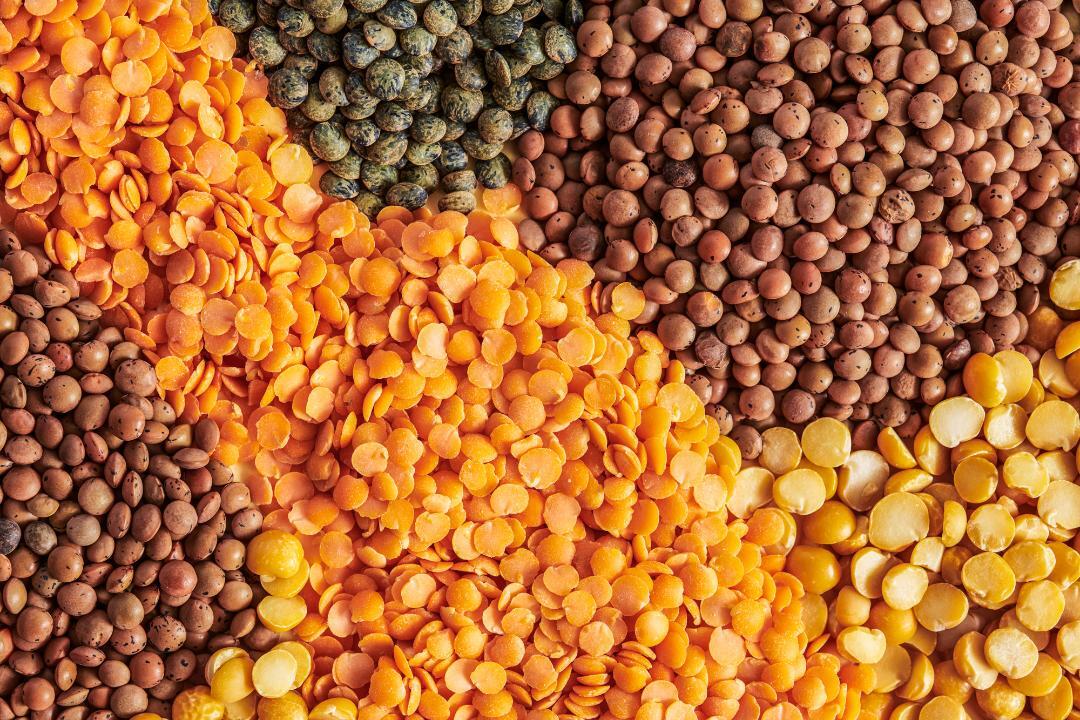Lentils are one of the world's oldest health foods. Growers first raised these beans in the Middle East in 8,000 B.C, and they've worked their way west since then as one of the earliest domesticated crops, seen in the diets of ancient Rome and Egypt. Along the way, Greeks considered the bean a poor man's food while Egyptians often regarded it as royal fare.
Dietitians like the gluten-free food because it's got lots of nutrition. Cooks like how its subtle flavour makes it the perfect canvas for other ingredients and seasonings. Many countries enjoy lentils as a dietary staple, as they offer an earthy, mild, nutty flavour that works well in various recipes. Canada leads the world’s production of lentils, followed by India.
What are lentils?
The lentil plant (Lens Culinaris) originates from Asia and North Africa and is one of our oldest sources of food. A cousin to the pea and a rich provider of protein and carbohydrates the lentil is also a good source of calcium, phosphorus, iron and B vitamins – making it an important diet staple the world over.
There are several different varieties – most commonly used in cooking are brown, red, green, puy and yellow.
How to prepare lentils
Lentils do not require it but can be soaked in order to reduce cooking time by about half.
Before cooking, rinse lentils in cold water, pick over to remove debris or shrivelled lentils, then drain.
How to cook lentils
Boil lentils in three times the volume of water and avoid cooking with anything acidic – such as vinegar.
Lentils will vary in their cooking times depending on their variety and age, so always check the packet.
As a rough guide to cooking times:
Green and brown lentils: 35-45 minutes
Red split lentils: 15-20 minutes
Puy lentils: 25-30 minutes
Yellow lentils: 40-45 minutes
Lentils are also great in the pressure cooker; cook for around 20-30 mins (depending on the type).
How to store lentils
Keep lentils in an airtight container in a cool, dry place. Although lentils can be kept and eaten indefinitely, they are best enjoyed within one year of purchase.
When are lentils in season?
All year round.
Choose the best lentils
Lentils can be bought, cooked and ready to eat, in a can or pouch, and are ideal for adding bulk to salads and sides.Most commonly, lentils are bought dried and ideally will be firm, clean and un-shrivelled. The type of lentil you choose will depend on intended usage:
Green and brown: Ideal for warm salads, casseroles and stuffing as they tend to retain their shape after cooking.
Puy lentils: These grey-green lentils, grown in the French region of Le Puy, are often more expensive than other common cooking varieties and are thought to be superior in texture (which they retain after cooking) and taste. This makes them the perfect accompaniment to more expensive ingredients such as fish and game, as well as sausages.
Red split lentils: When cooked these lentils form a rich purée and therefore are superb for thickening dishes such as soups and casseroles. They are also often cooked with spices to make the Indian dish dhal.(see our recipes)
Yellow lentils: Also known as yellow split peas. Being quite similar to red split lentils, the yellow variety are used in a similar way and are great for adding colour to winter dishes. They are also traditionally stewed to a purée, typically in ham stock, in the north-east of England in a dish called pease pudding.

